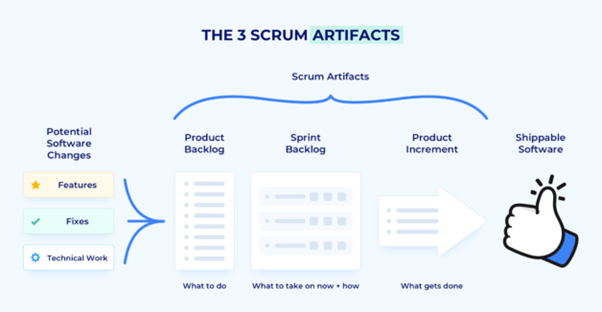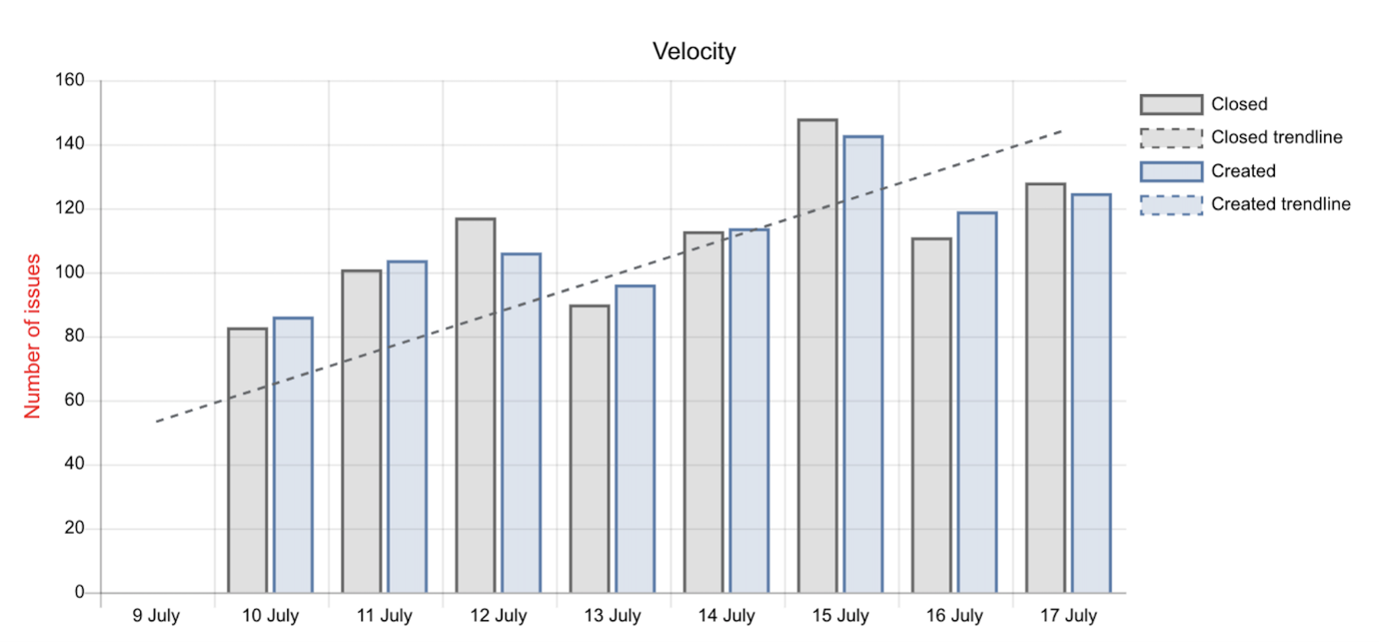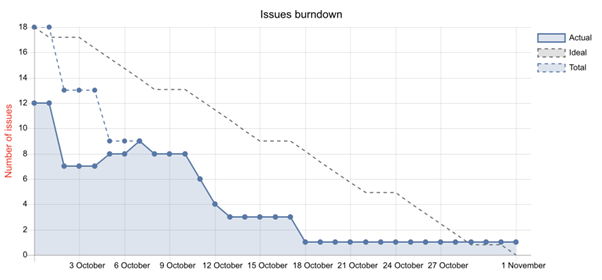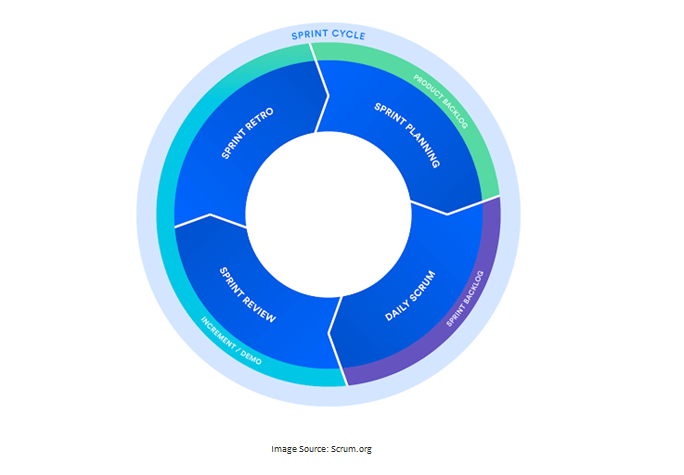Agile Scrum methodology is a sprint-based project management system with the goal of delivering the highest value to stakeholders.
Agile and scrum are two similar project management systems with a few key differences.
- Agile is more flexible and promotes leadership teams, while scrum is more rigid and promotes cross-functional teams.
- Agile lets teams develop projects in small increments called “sprints” and allow for more effective collaborations among teams working on complex projects.
How does agile scrum work?
Agile scrum methodology is the combination of the agile philosophy and the scrum framework. Agile means “incremental, allowing teams to develop projects in small increments. Scrum is one of the many types of agile methodology, known for breaking projects down into sizable chunks called “sprints.” Agile Scrum methodology is good for businesses that need to finish specific projects quickly.
What are the benefits of agile scrum methodology?
Benefits of agile scrum methodology:
- Flexibility and adaptability
- Creativity and innovation
- Lower costs
- Quality improvement
- Organizational synergy
- Employee satisfaction
- Customer satisfaction
Compare this with traditional project management systems, in which stakeholders do not provide frequent feedback and time is wasted making changes to the product halfway through development – or worse, such as the teams needing to start from scratch after the product has already been built.

Three essential roles for scrum success
Scrum Product Owner
- Product owners are focused on understanding business, customer, and market requirements, and then prioritizing the work to be done by the engineering team accordingly.
- Effective product owners: o Build and manage the product backlog. o Closely partner with the business and the team to ensure everyone understands the work items in the product backlog. o Give the team clear guidance on which features to deliver next. o Decide when to ship the product with a predisposition towards more frequent delivery.
Scrum Master
- Scrum masters are the champions for scrum within their teams. They coach teams, product owners, and the business on the scrum process, and look for ways to fine-tune their practice of it.
- An effective scrum master deeply understands the work being done by the team and can help the team optimize their transparency and delivery flow.
- As the facilitator-in-chief, he/she schedules the needed resources (both human and logistical) for sprint planning, stand-up, sprint review, and the sprint retrospective.
Scrum Development Team
- They are the champions for sustainable development practices. The most effective scrum teams are tight-knit, co-located, and usually five to seven members.
- One way to work out the team size is to use the famous ‘two pizza rule’ coined by Jeff Bezos, the CEO of Amazon (the team should be small enough to share two pizzas).
- Team members have different skill sets and cross-train each other so no one person becomes a bottleneck in the delivery of work.
- Strong scrum teams are self-organizing and approach their projects with a clear ‘we’ attitude. All members of the team help one another to ensure a successful sprint completion.
Scrum Artefacts
Scrum Artifacts are designed to guarantee the transparency of key information in decision making.
-
Product Backlog (PB) o The product backlog is a list that collects everything the product needs to satisfy potential customers. o It is prepared by the product owner and the functions are prioritized according to what is more and less important for the business. o The goal is for the product owner to answer the question “What should be done”.
-
Sprint Backlog (SB) o It is a subset of items of the product backlog, which are selected by the team to perform during the sprint on which they are going to work. o The team establishes the duration of each Sprint. Usually, the sprint backlog is displayed on physical boards called Scrum boards – which makes the development process visible to everyone who enters the development area.
-
Increment (Sprint Goal) o The Increment is the sum of all the tasks, use cases, user stories, product backlogs and any element that was developed during the sprint and that will be made available to the end-user in the form of Software.
 Image Source – usefyi.com
Image Source – usefyi.com
Scrum ceremonies or events
-
Organize the backlog (Backlog Grooming) o This event is the responsibility of the product owner. The product owner’s main jobs are to drive the product towards its product vision and have a constant pulse on the market and the customer. o Therefore, he/she maintains this list using feedback from users and the development team to help prioritize and keep the list clean and ready to be worked on at any given time.
-
Sprint planning
o The work to be performed (scope) during the current sprint is planned during this meeting by the entire development team. o This meeting is led by the scrum master and is where the team decides on the sprint goal. o Specific user stories are then added to the sprint from the product backlog. These stories always align with the goal and are also agreed upon by the scrum team to be feasible to implement during the sprint. o At the end of the planning meeting, every scrum member needs to be clear on what can be delivered in the sprint and how the increment can be delivered. -
Sprint o A sprint is the actual time period when the scrum team works together to finish an increment. Two weeks is a typical length for a sprint, though some teams find a week to be easier to the scope or a month to be easier to deliver a valuable increment. o During this period, the scope can be re-negotiated between the product owner and the development team if necessary. This forms the crux of the empirical nature of scrum. o All the events — from planning to retrospectives — happen during the sprint. Once a certain time interval for a sprint is established, it must remain consistent throughout the development period. This helps the team learn from past experiences and apply that insight to future sprints.
-
Daily scrum or stand up o This is a daily super-short meeting that happens at the same time (usually mornings) and places to keep it simple. o The stand-up is the time to voice any concerns you have with meeting the sprint goal or any blockers. o A common way to conduct a stand up is for every team member to answer three questions in the context of achieving the sprint goal: • What did I do yesterday? • What do I plan to do today? • Are there any impediments?
-
Sprint review o At the end of the sprint, the team gets together for an informal session to view a demo of, or inspect, the increment. o The development team showcases the backlog items that are now ‘Done’ to stakeholders and teammates for feedback. o The product owner can decide whether to release the increment, although in most cases the increment is released. o This review meeting is also when the product owner reworks the product backlog based on the current sprint, which can feed into the next sprint planning session.
-
Sprint retrospective o The retrospective is where the team comes together to document and discuss what worked and what didn’t work in a sprint, a project, people or relationships, tools, or even for certain ceremonies. o The idea is to create a place where the team can focus on what went well and what needs to be improved for the next time, and less about what went wrong.
What are scrum metrics?
Scrum metrics are specific data points that scrum teams track and use to improve efficiency and effectiveness. When defined, understood, and implemented, scrum metrics can become insights that help guide and improve a team’s agile journey. Scrum teams use metrics to inform decision-making and become more efficient in planning and execution. They can also be used to establish a baseline on the status quo and set target goals and improvement plans.
Team velocity
A velocity chart displays the average amount of work your team is completing during a sprint or iteration. It can be measured either in issues, story points, or hours. The vertical axis displays how you measure effort and work (story points, issues, etc.). While the horizontal display shows time. For each iteration or sprint, you’ll see the amount of work committed to (created) mapped out against how much was completed.

Sprint burndown
A burndown chart shows the amount of work that has been completed in a time-boxed sprint (or epic) and how much work remains. The quantity of work (or effort) left is represented by the line labelled "actual", while time is displayed on the horizontal axis. The "ideal" line represents the ideally spread closing of issues within the chosen time frame and takes your non-working days into account. A sprint burndown chart tracks the completion of work throughout a sprint. It does so by comparing the time and amount of work to complete, measured in story points or hours.

